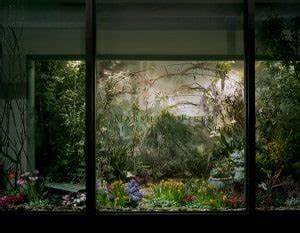
Vertical Gardens: Exploring Benefits, Design, and Future Implications
Introduction
Vertical gardens have gained immense popularity in urban environments as a solution to connect humans with nature. This article explores the importance of understanding vertical gardens and their potential benefits, providing a more comprehensive understanding of their environmental, health, and economic aspects.
Historical Background
From ancient wonders like the Hanging Gardens of Babylon to present-day innovations, vertical gardens have a rich and evolving history. This journey highlights remarkable developments and milestones that have shaped the existence of vertical gardens.
Key Concepts and Definitions
Vertical gardens differ significantly from traditional horizontal gardens, necessitating an understanding of their distinctions. Additionally, terms such as biophilia, biophilic design, and green infrastructure play a vital role in fostering the human-nature connection within urban environments.
Main Discussion Points
Environmental Benefits of Vertical Gardens
Vertical gardens offer a multitude of environmental benefits, including improved air quality and the reduction of the urban heat island effect. They also contribute to human health and well-being by reducing stress and increasing productivity. Moreover, vertical gardens have economic advantages, such as energy savings and increased property value.
Design and Implementation Considerations for Vertical Gardens
Successful vertical gardens require careful consideration of design aspects, including plant selection, irrigation systems, and structural support. Implementation techniques and technologies, such as hydroponics and living walls, are employed to ensure their success. Integrating vertical gardens into existing urban infrastructure poses challenges that demand innovative solutions.
Social and Cultural Implications of Vertical Gardens
Vertical gardens have the potential to enhance community engagement and foster social cohesion. They promote sustainable lifestyles and nurture a sense of environmental responsibility. Furthermore, vertical gardens can hold cultural significance in different societies, reflecting their connection to cultural identity.
Case Studies or Examples
Real-world examples like the Bosco Verticale in Milan and the One Central Park in Sydney demonstrate the success of vertical garden projects. These case studies have positively impacted the surrounding environment, community, and quality of life. Lessons learned from these examples shed light on notable challenges and strategies for improvement.
Current Trends or Developments
Vertical gardens are increasingly popular in urban planning and architecture. Recent research findings highlight their benefits and effectiveness. Innovative technologies and materials are being utilized to advance the development of vertical gardens.
Challenges or Controversies
Criticism regarding the feasibility and sustainability of vertical gardens must be addressed. Valid concerns such as maintenance requirements and water consumption demand careful consideration. Differing viewpoints on the effectiveness and long-term viability of vertical gardens contribute to ongoing debates in the field.
Future Outlook
The future of vertical gardens holds immense potential for technological advancements and innovative designs. They can play a crucial role in addressing challenges related to urbanization, climate change, and food security. Collaboration and interdisciplinary approaches will be key to advancing the field of vertical gardens.
Conclusion
Vertical gardens offer a meaningful expression of the human-nature connection. Through their numerous benefits, they have the power to transform urban environments and improve the well-being of communities. Further research and exploration are necessary to fully harness the potential of vertical gardens. It is crucial to incorporate them into urban planning and design for a sustainable and harmonious future.
References
List of relevant sources, including books, research papers, and articles, for further reading and research on vertical gardens and their connection to the human-nature connection.